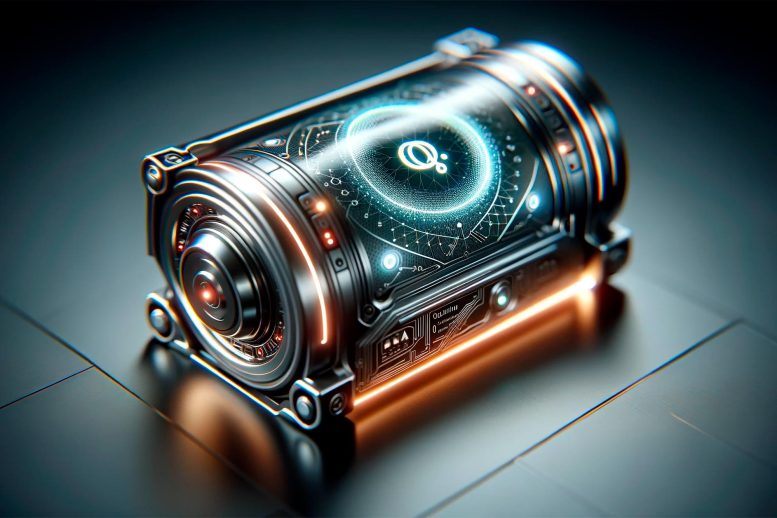
Quantum batteries, with their innovative charging methods, represent a leap in battery technology, promising higher efficiency and wider applications in sustainable energy solutions. Credit: SciTechDaily.com
A new way to charge batteries harnesses the power of “indefinite causal order.”
Batteries that exploit quantum phenomena to gain, distribute, and store power promise to surpass the abilities and usefulness of conventional chemical batteries in certain low-power applications. For the first time, researchers including those from the University of Tokyo take advantage of an unintuitive quantum process that disregards the conventional notion of causality to improve the performance of so-called quantum batteries, bringing this future technology a little closer to reality.
Quantum Batteries in Sustainable Energy
When you hear the word “quantum,” the physics governing the subatomic world, developments in quantum computers tend to steal the headlines, but there are other upcoming quantum technologies worth paying attention to. One such item is the quantum battery which, though initially puzzling in name, holds unexplored potential for sustainable energy solutions and possible integration into future electric vehicles. Nevertheless, these new devices are poised to find use in various portable and low-power applications, especially when opportunities to recharge are scarce.
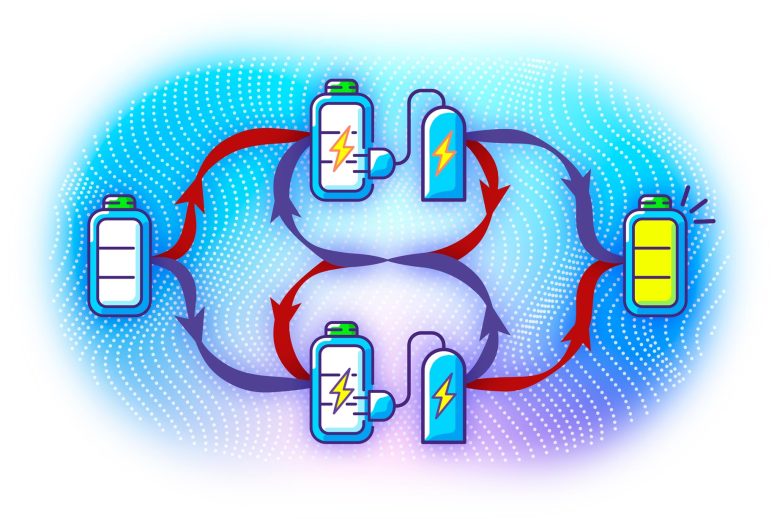
In the classical world, if you tried to charge a battery using two chargers, you would have to do so in sequence, limiting the available options to just two possible orders. However, leveraging the novel quantum effect called ICO opens the possibility to charge quantum batteries in a distinctively unconventional way. Here, multiple chargers arranged in different orders can exist simultaneously, forming a quantum superposition. Credit: ©2023 Chen et al.
Research Advancements in Quantum Batteries
At present, quantum batteries only exist as laboratory experiments, and researchers around the world are working on the different aspects that are hoped to one day combine into a fully functioning and practical application. Graduate student Yuanbo Chen and Associate Professor Yoshihiko Hasegawa from the Department of Information and Communication Engineering at the University of Tokyo are investigating the best way to charge a quantum battery, and this is where time comes into play. One of the advantages of quantum batteries is that they should be incredibly efficient, but that hinges on the way they are charged.
“Current batteries for low-power devices, such as smartphones or sensors, typically use chemicals such as lithium to store charge, whereas a quantum battery uses microscopic particles like arrays of atoms,” said Chen. “While chemical batteries are governed by classical laws of physics, microscopic particles are quantum in nature, so we have a chance to explore ways of using them that bend or even break our intuitive notions of what takes place at small scales. I’m particularly interested in the way quantum particles can work to violate one of our most fundamental experiences, that of time.”
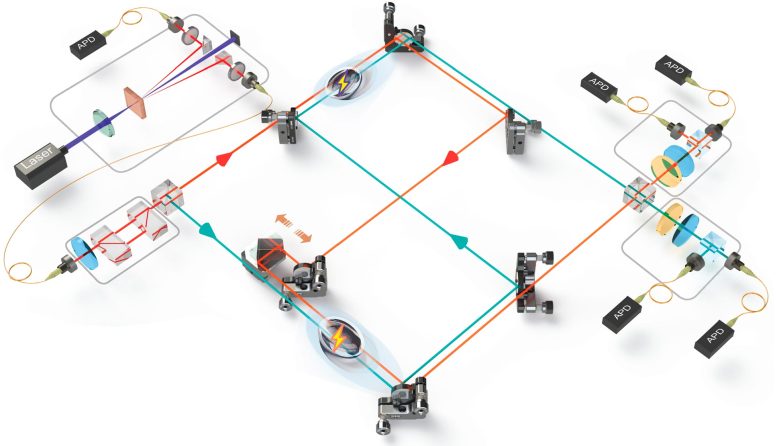
While it’s still quite a bit bigger than the AA battery you might find around the home, the experimental apparatus acting as a quantum battery demonstrated charging characteristics that could one day improve upon the battery in your smartphone. Credit: ©2023 Zhu et al.
Quantum Charging Methods
In collaboration with researcher Gaoyan Zhu and Professor Peng Xue from Beijing Computational Science Research Center, the team experimented with ways to charge a quantum battery using optical apparatuses such as lasers, lenses, and mirrors, but the way they achieved it necessitated a quantum effect where events are not causally connected the way everyday things are. Earlier methods to charge a quantum battery involved a series of charging stages one after the other. However, here, the team instead used a novel quantum effect they call indefinite causal order, or ICO. In the classical realm, causality follows a clear path, meaning that if event A leads to event B, then the possibility of B causing A is excluded. However, at the quantum scale, ICO allows both directions of causality to exist in what’s known as a quantum superposition, where both can be simultaneously true.
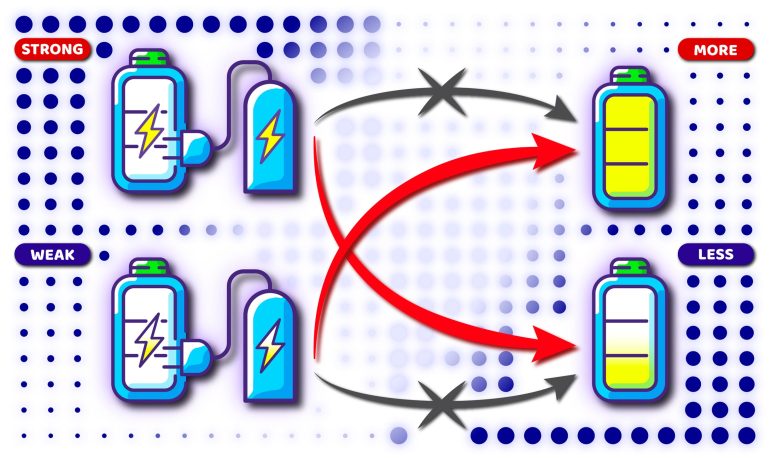
Common intuition suggests that a more powerful charger results in a battery with a stronger charge. However, the discovery stemming from ICO introduces a remarkable reversal in this relationship; now, it becomes possible to charge a more energetic battery with significantly less power. Credit: ©2023 Chen et al.
Implications of Quantum Battery Research
“With ICO, we demonstrated that the way you charge a battery made up of quantum particles could drastically impact its performance,” said Chen. “We saw huge gains in both the energy stored in the system and the thermal efficiency. And somewhat counterintuitively, we discovered the surprising effect of an interaction that’s the inverse of what you might expect: A lower-power charger could provide higher energies with greater efficiency than a comparably higher-power charger using the same apparatus.”
The phenomenon of ICO the team explored could find uses beyond charging a new generation of low-power devices. The underlying principles, including the inverse interaction effect uncovered here, could improve the performance of other tasks involving thermodynamics or processes that involve the transfer of heat. One promising example is solar panels, where heat effects can reduce their efficiency, but ICO could be used to mitigate those and lead to gains in efficiency instead.
Reference: “Charging Quantum Batteries via Indefinite Causal Order: Theory and Experiment” by Gaoyan Zhu, Yuanbo Chen, Yoshihiko Hasegawa and Peng Xue, 13 December 2023, Physical Review Letters.
DOI: 10.1103/PhysRevLett.131.240401
This work has been supported by the National Natural Science Foundation of China (Grant Nos. 92265209 and 12025401). Y. H. acknowledges support by JSPS KAKENHI Grant Number JP22H03659. Y.C. acknowledges support by JST SPRING, Grant Number JPMJSP2108.




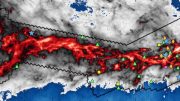




From accretion disks to quantum spins, topological vortices can provide infinite rotational force for many galaxies, celestial bodies, and microparticles. The synchronous effect of the superposition and deflection of topological vortices makes motion more complex. The correct understanding and application of the rotation of topological vortices is an urgent issue in human science.
Wishing you all success.
If anyone is really interested in science, you can browse https://www.zhihu.com/column/c_1278787135349633024.
The so-called quantum, its physical essence is the spin of topological vortices. Spin generates gravity. Spin generates energy. Spin generates evolution. Spin generation time. Please don’t fantasize about Breaking Causality.
Topological vortex batteries are the direction of future energy for human society.
like the quantum phenomena this story purports to relate to; any attempy tp extract information from the system fails: because you know “quantum” is involved — due to the title — any anttempt to measure HOW, is doomed to failure.
Too much fluff and filler at the start of the piece; tl;dr way before you ever got to the point.
No point in even trying, cos any story needing that much filler has nothing real to offer. Like the only other response — from the inimitable bao-hua — this entire story is like the result of a request to GPT, “Write me a news article about how quantum batteries will be a game changer”.
Thank you for your understanding.